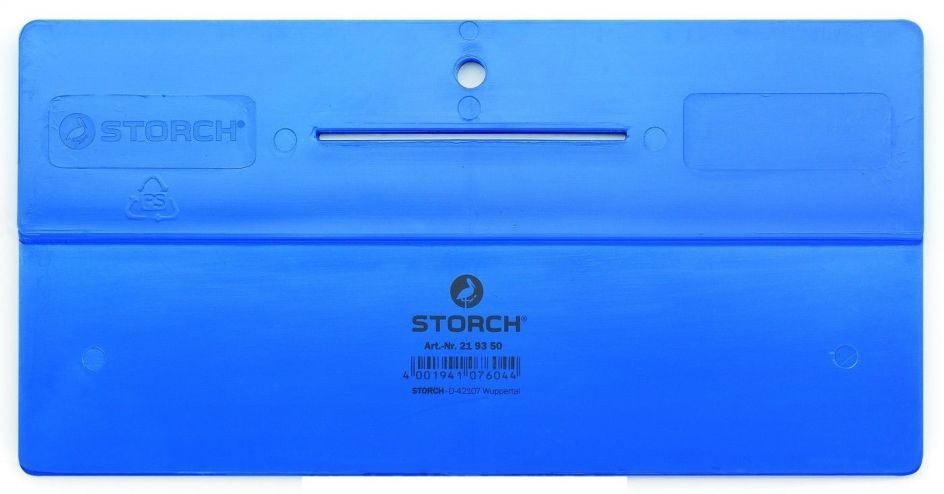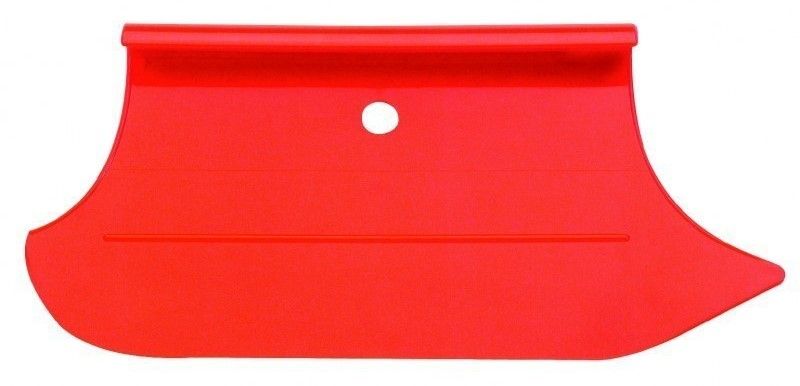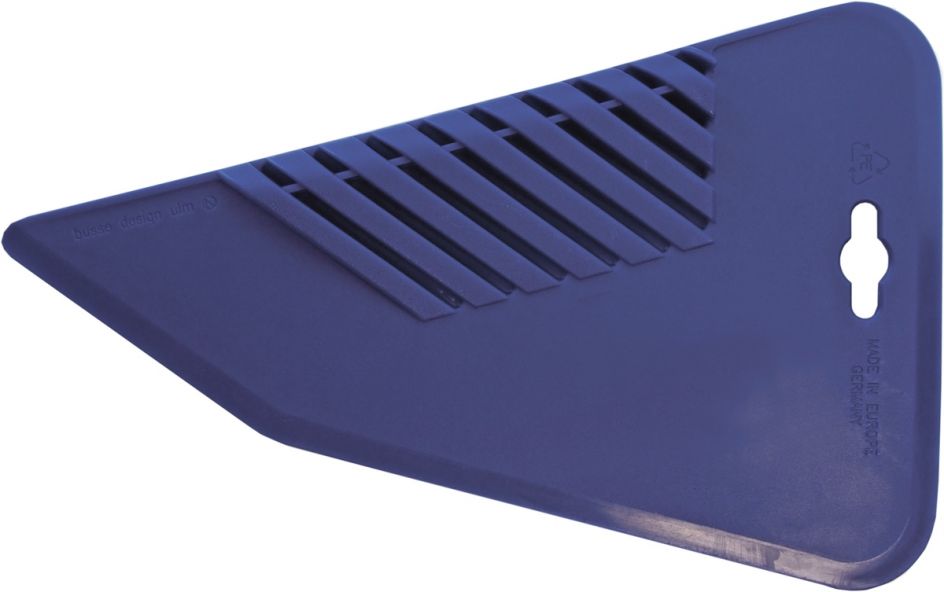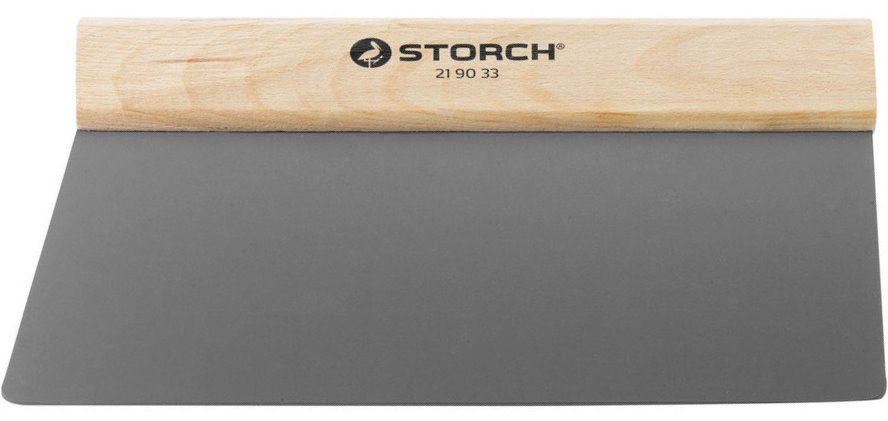The wallpaper smoother is used to smooth out wallpaper and press it onto the wall. It is an alternative tool to the wallpapering roller or brush. In addition, it can also be used as a cutting edge, for instance to remove excess wallpaper at skirting boards. This plastic tool is used to smooth out more robust and resistant, thicker wallpapers without delicate surfaces or embossing.
Differences to painter's spatula
The painter's spatula is an extremely useful tool for the removal of old wallpapers. There are various models, both manual and electric. It is different from the wallpapering smoother in terms of application as well as appearance.
Wallpapering smoother - variations
The classic model is rectangular and made of plastic. It is available in a number of colours and sizes. For DIY enthusiasts, the medium size (length: 24 cm, width: 12 cm) is probably ideal.

It is very thin, just a few millimetres thick, to ease the smoothing process. The corners are rounded to avoid damages when setting the tool onto the wallpaper. The grip side is stiffer and harder than the more flexible "press-on" side and usually comes with a slot for the blade. There might also be a hole above the blade slot (for hanging the tool).
Other models are also made of plastic materials but might vary in terms of shape and the number of press-on edges. The trapezoidal wallpaper smoother makes working on larger surfaces easy. Some models feature a recess grip and a wide, arrow-like tip on one side of the edge. This is particularly useful for corners, behind skirting boards and at the top end of walls, by the ceiling. It is also great for curved areas.

The triangular wallpaper smoother features three flexible press-on edges of different lengths. The most common size of triangular smoothers is 28 x 17 cm. It is very versatile and suited for hard-to-reach areas (e.g. recesses, corners, curved areas). These tools are a great help for experienced DIY fans, especially when it comes to hanging heavy wallpapers.

Another useful variation consists of a slanted blade (hard PVC, 2 mm) and a wooden handle. Depending on make and model, the blade and the handle can be riveted together or connected with screws (so the blade can be exchanged). This tool is very comfortable to handle and even the inexperienced usually find it easy and safe to use. However, the plastic blade is inflexible and might require a bit more getting used to than other models. Again, a number of different sizes are available.

Prices for wallpaper smoothers depend on the type and model but generally range between 2 and 15 Pounds. Quality and production values are also decisive factors. You will often find terms like "flexible/semi-flexible plastic", which refer to the material's elasticity, pliability and "give". The main factor is that the plastic needs to be break-proof. To find the right model for you, seek the advice of an expert in your DIY shop; they will be able to assist you with your choice by providing the necessary information regarding handling and quality.
Multifunctional application options
Wallpaper smoothers are multifunctional tools and no household should be without at least the simple version. The only issue to consider is the thickness and surface structure of the wallpaper - the smoother is not the first choice of tool for every type! Let's look at this more closely:
1) Pressing wallpaper on
Using the smoother, press a length of wallpaper onto the wall and then take your time to adjust it and smooth it out. The press-on edge is also very suitable for accurately adjusting the wallpaper in corners, recesses and along edges. As a general rule, never apply more pressure than absolutely necessary.
2 ) Smoothing out wallpaper
The principle is the same as it is with wallpapering brushes or rollers. A length is gradually smoothed on from top to bottom and then towards the sides in order to avoid blisters or creases and to ensure that it optimally adheres to the wall surface. If larger air bubbles appear, the length of wallpaper should partially be removed from the wall and re-hung before smoothing it out again.
Working with a smoother is different to working with a brush or roll. Move the smoother loosely from the wrist, work smoothly and swiftly and do not use too much force. Just imagine you are smoothing out dough on a baking tray, and the movement will come naturally. Do not apply too much pressure as this causes friction which can lead to damages.
Generally speaking, the wallpaper smoother is best suited for thicker or heavier wallpapers with robust surfaces. For foil wallpapers like metal or effect types, imitation leather, wallpapers with strong pattern structures, glass bead, flock and some nature wallpapers, the smoother should stay in the tool box. For these materials, the wallpapering brush or roller are better choices.
3) Cutting wallpaper
You can use the smoother as a cutting edge, thus killing two birds with one stone. First, press the smoother onto the edge of the wallpaper where it needs to be cut, e.g. along skirting boards, ledges, recesses, window soffits, or door frames. Put the harder side of the smoother flush against the edge and cut excess material off with your cutter knife.

